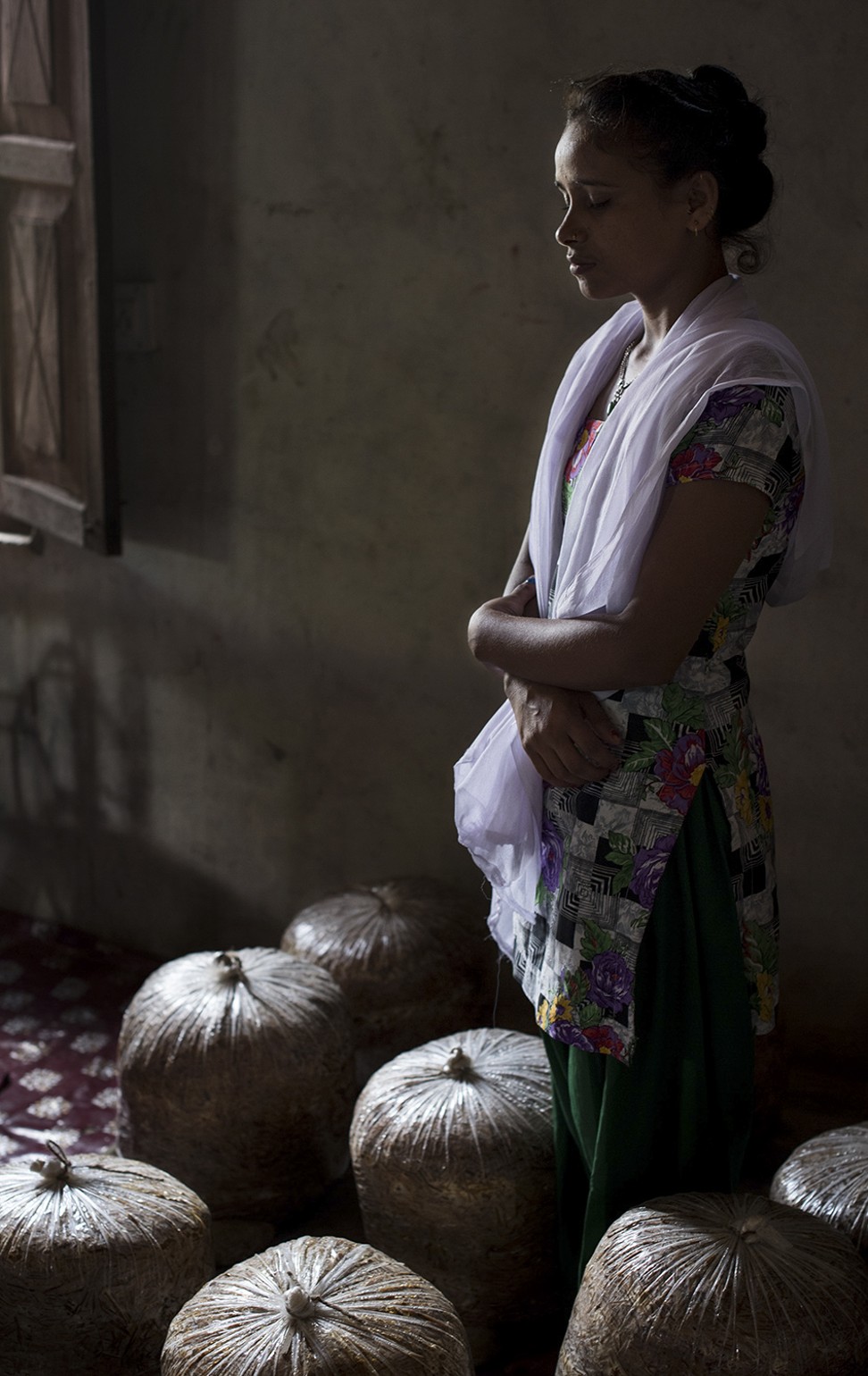It’s easy to cross the border between Nepal and India. Too easy. Most of its 1,600km is marked by simple, 30cm-high concrete piles. There is no wall, no fence, no barbed wire. In fact, some farmers have fields that are part in Nepal and part in India.
There is no surveillance infrastructure to make sure people don’t stray across the border and Nepali and Indian passport holders don’t need visas to visit each others’ countries. They don’t even have to carry their passports; an official identification document will do.
While an “open border” may facilitate trade and cultural and social exchange, and favour seasonal workers looking for jobs, it also poses a great threat to at-risk women and children.
According to Unicef, 12,000 children are trafficked to India from Nepal every year. Most are destined for brothels; some are forced into bonded labour, marriage or even organ removal.
Mermendo Taya left her home in a small rural village after an acquaintance called her from Kathmandu in September 2016. “She told me that some of her friends were looking for waitresses and domestic helpers in Pune [150km from Mumbai, India’s financial capital], and that the pay was good,” Taya, now 20, says. “I was bored in the village and wanted to see the world, so I decided to tag along without even telling my parents that I was leaving.”
The two women travelled by bus to Nepalgunj, a bustling border city in west Nepal, used a cycle rickshaw to cross the border showing no ID, and continued their journey by train. Once in Pune, they stayed in what appeared to be the sleeping quarters of a beauty salon. “The girl I was travelling with told me it was a temporary arrangement while she sorted out our work,” recalls Taya.
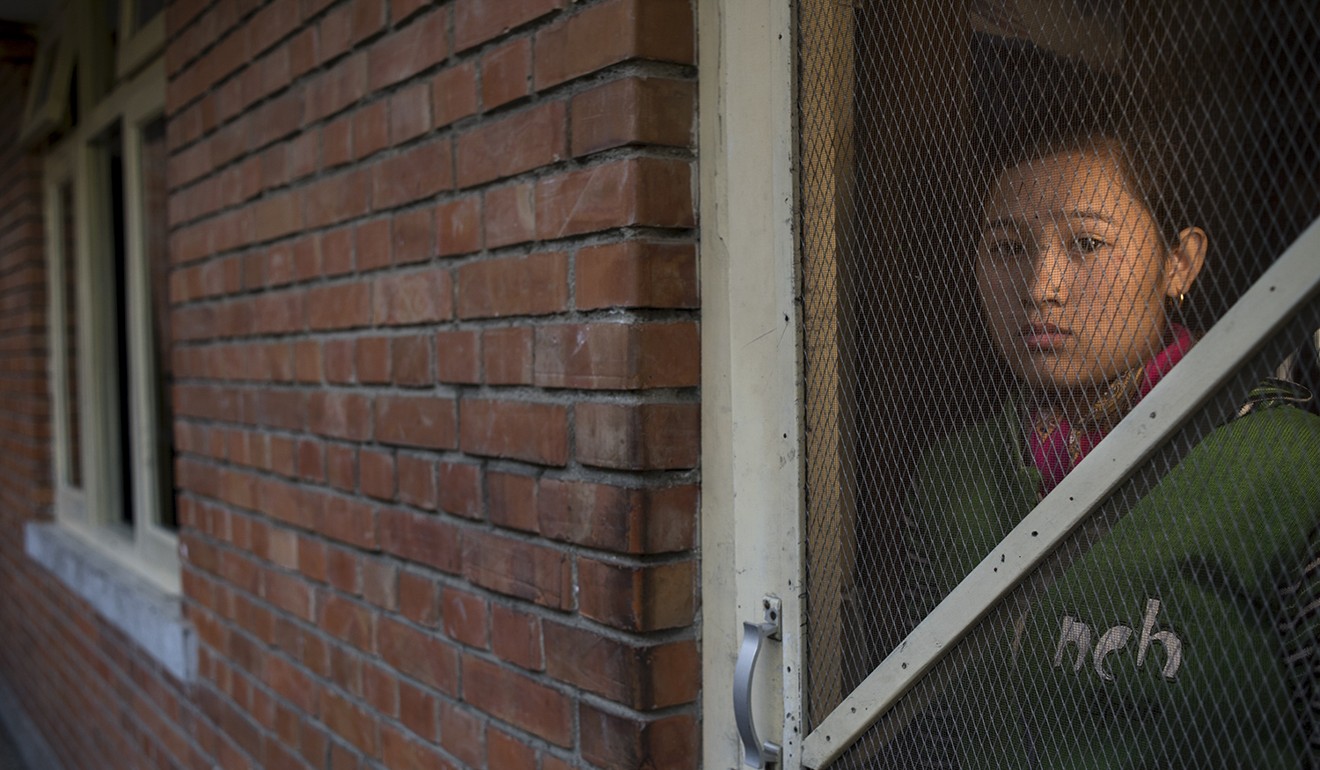
Then her companion disappeared and Taya discovered that she had been sold to a brothel. “The madam told me that I had to repay the 200,000 Indian rupees [HK$23,000] she had paid for me,” Taya says, “and that food and lodging would be added to the outstanding amount.”
Taya was forced to perform sex work. When she resisted, she was raped. “Clients paid me directly, and then I had to give the madam a commission plus whatever she asked for my living expenses,” Taya explains. She calculated that, with her income, it would take 10 years to repay the debt.
But Taya was lucky: she was rescued in a raid by Indian police in January last year. “I don’t know how it happened, because the madam used to know when officers were coming and we would hide in a secret underground room,” she says. “Maybe the corrupt policemen had no time to warn her.”
In all, Taya spent 2½ months in a brothel. Sharmila Tamang, from the Sindhupalchok district of central Nepal, endured nine months.
Tamang, who is now 23, had been married at 16, gave birth to a boy a year later, but could not make ends meet because harvests had been poor.
“A man in our village promised me a job where I could easily save 300,000 [Nepali] rupees [US$2,700] in two years,” she says. “He was well respected, so we believed him and I left for Kolkata. There, another man took me to Delhi and then to Agra, where I was supposed to work as a domestic helper for a family.”
Instead, Tamang was locked in a building with younger girls. “There were many 14- and 15-year-olds,” she says. “All had been trafficked from Nepal, Bangladesh and parts of India. Five men guarded the place at all times to make sure we didn’t escape. And we were forced to entertain between four and 15 clients a day.”
The women were regularly punished. “If I ate too much, they would hit me; if I ate too little, they would hit me too,” Tamang recalls. “But I was most afraid for my son and my family, because I had no contact with them.”
Despite the tight security, she plotted her escape with two other Nepali women confined inside the brothel. “We made a rope from saris and climbed down from a window on the upper floor, where we were locked up,” Tamang says. “I fell and hurt my back, but my friends helped me to reach Delhi.”
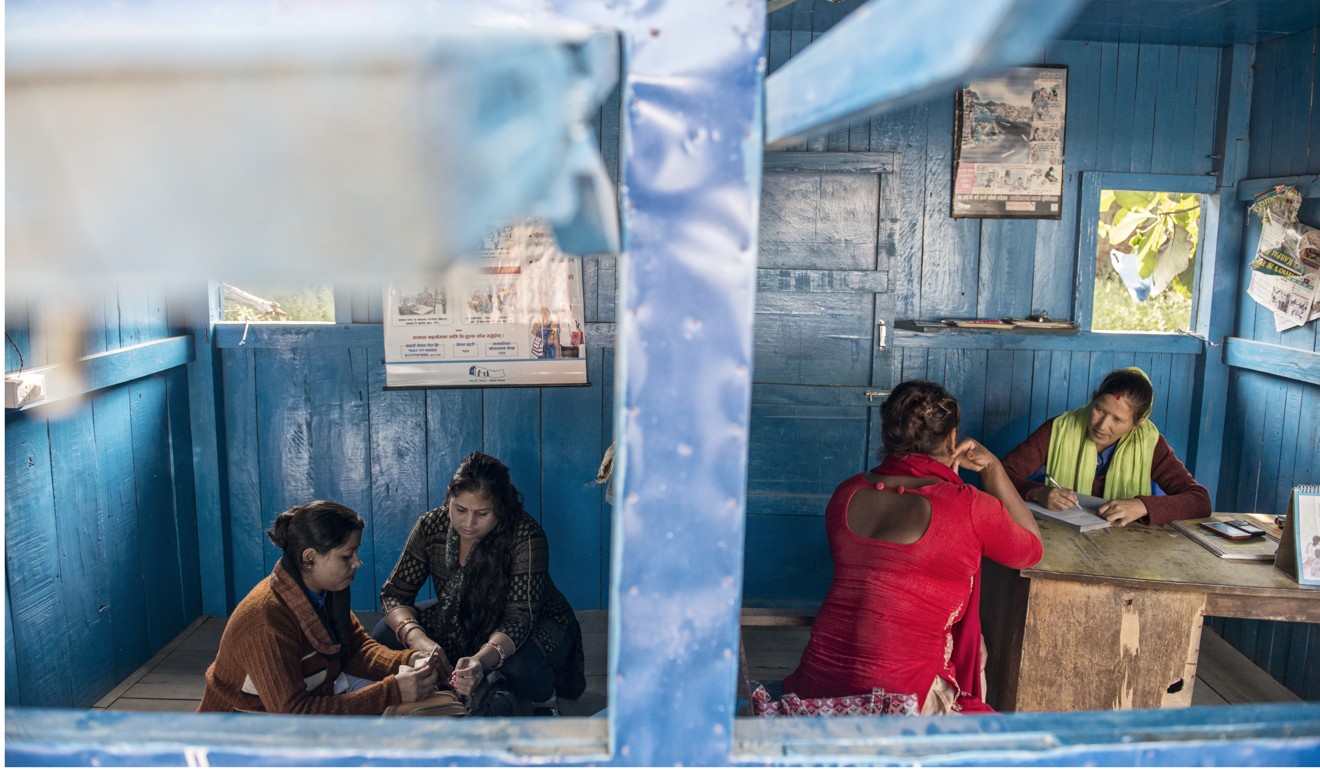
Both Tamang and Taya found shelter at an Indian government facility and met many other South Asian women who had been forced to work in prostitution. All were referred to NGOs by immigration authorities. Maiti, an organisation that supports trafficked women, managed to find their families and arranged transportation home. Again they crossed the border at Nepalgunj, this time en route to Kathmandu.
Sexploration Season 2 Episode 4: Decriminalization of sex work

These dayscrossing the border at Nepalgunj is not as easy as it was because Maiti Nepal has established one of its 12 checkpoints there. It is a simple metal shack with two rooms just metres from Indian territory.
From 6am until long after sunset, three or four women dressed in blue kurtas patrol the potholed stretch of dusty road, one of the busiest crossing points between the two countries, backed up by police and army personnel.
“Our job is to identify vulnerable women and children: those who can be preyed upon by trafficking gangs,” explains Laxmi Singh, who is on patrol. “Whenever we think someone may be at risk, we focus on three things: who is she travelling with, what does she look like, and whether the information she provides can be verified by someone else.”
Over the day and a half we spend at Maiti Nepal’s checkpoint, it becomes clear that the task is a difficult one. Hundreds of buses, trucks, cars and tricycles cross the border every day. Nepal police sub-inspector K.S. Kathayat admits that they are understaffed and officers lack motivation to stop traffickers.
“Maiti’s women have our full support,” he says. “If they find something suspicious, we intervene immediately and coordinate with the Indian police if needed.” Reluctantly, however, Kathayat concedes that the procedures required to extradite people between the two countries – or to involve Interpol – are not carried out once suspects have crossed the border. “Formalities would take too long,” he says.
And it is frequently difficult to tell who is a victim. “Mafias are nothing like in the movies. Women aren’t taken gagged and with their hands tied in the back of trucks,” explains Bishwo Ram Khadka, director of Maiti Nepal. “Most make the trip of their own will because they don’t know someone is cheating them. They may be accompanied by their trafficker or travelling alone, and many are told not to speak to us or to lie in order to avoid scrutiny. They fully believe they are on course to a better life.”
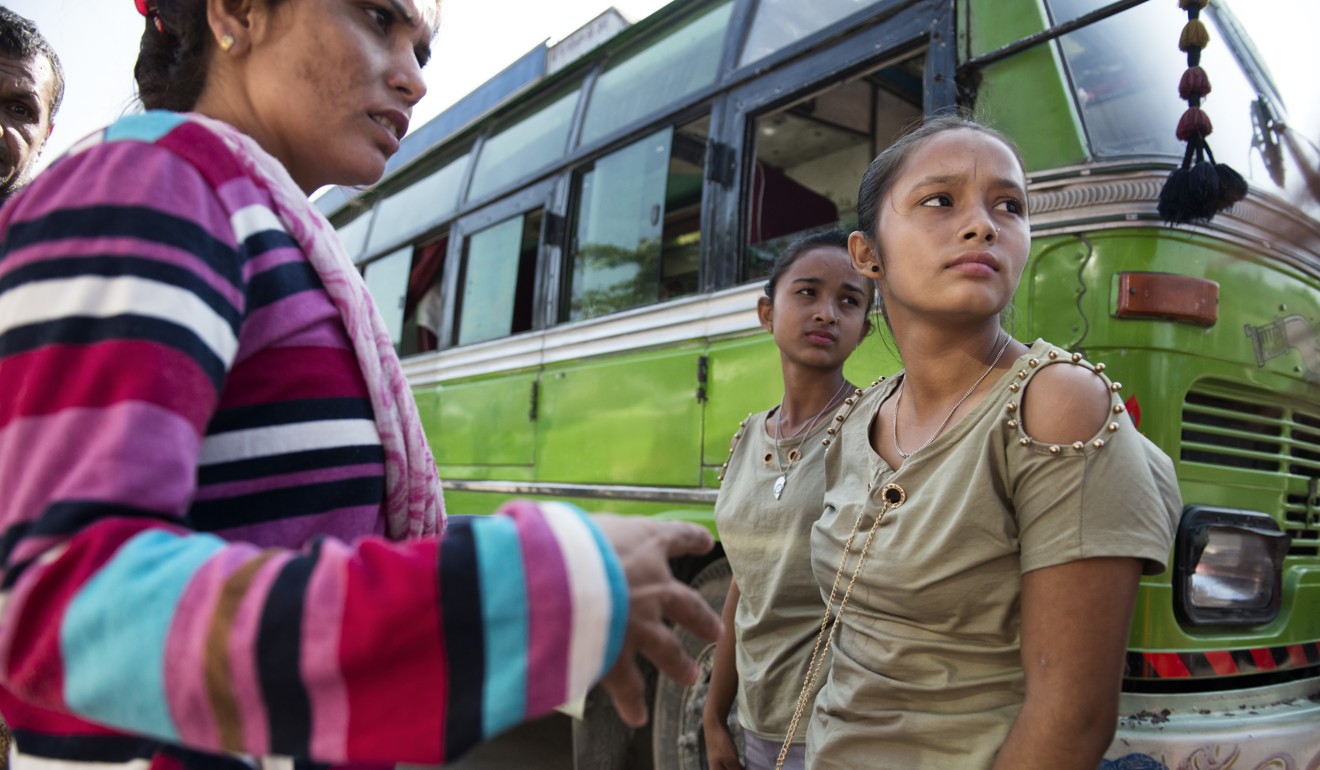
During our time at the checkpoint, a few dozen women are stopped and interrogated, and one wonders whether members of an NGO have the legal authority to do so, especially when they prevent people from crossing with no evidence of illegal activity. But nobody seems troubled and everyone does what they are told. The patrol requests that women and girls step down from vehicles. They check IDs, ask where the women are going and why, and demand the telephone numbers of family members if stories are not convincing.
Three girls in their late teens say they are on a shopping trip to India, but their parents, when called, deny all knowledge. The teenagers look increasingly nervous and one starts to cry. After a brief conversation, Singh turns them back. “We thought they could be going to engage in sex work, but we now think they just want to buy drugs readily available in India,” she says. “It’s not up to me to judge, but under the influence of drugs they are more vulnerable and it’s my duty to impede this kind of situation.”
An hour later, another young woman rings alarm bells. She is travelling to India with an older woman, and their story changes by the minute. Initially, they say they are going shopping for a wedding; then they claim that the younger woman is going to get married in India; finally, a call to the family is made. It transpires that the younger woman is already married in Nepal and her family have no idea who her travelling companion might be. “We suspect the older woman is a trafficker,” says Singh.
The older woman reacts violently and begins shouting at the Maiti staff. She claims she is saving the youngster from an abusive husband, but shows no proof. The young woman remains silent; she is taken to a room in the shack and her belongings are searched. A policewoman arrives.
“Most cases are complex, and we may not clarify this one today,” Singh says. “But it seems that this girl was in danger, and she is no longer.”
From its establishment in 1993 until the end of 2017, Maiti Nepal played a role in the incarceration of 1,571 traffickers and mediated in 10,665 cases of gender-based violence. It intercepted 36,045 women suspected of being susceptible to trafficking, most of them – more than 1,000 last year alone – at the Nepalgunj border post.
But trafficking routes and destinations change with shifts in the global economy, and India is just one part of an international problem. Even greater numbers of girls from Nepal are enslaved domestically or trafficked to other countries.

According to a report from Nepal’s National Human Rights Commission (NHRC), quoted by Unicef, the estimated number of Nepalis subject to trafficking or attempted trafficking in 2012-13 (there are no more recent figures) was 29,000. What’s more, the UN Office on Drugs and Crime states that, during the 2007-09 period, of detected victims of trafficking, 36 per cent were children (33 per cent girls, 3 per cent boys). Among the adults, women represented 53 per cent of the total.
Unicef says an estimated 11,000 to 13,000 girls and women are working in the “night entertainment industry” in the Kathmandu valley alone. The majority are children, some as young as eight years old. It also points out that “over the past few years, the expansion of the local sex industry has resulted in a rapid growth in the trafficking of women and children for commercial sexual exploitation”.
Maiti Nepal has also established checkpoints at bus stations across the country. We travel to the busy crossroads of Bharatpur, a key transport hub linking the rural west of Nepal and Kathmandu, and close to the tourism hotspot of Chitwan National Park. There, many girls – some perhaps just 10 years old – can be seen travelling alone or with barely older friends in rusty buses. Maiti’s staff check them all, despite complaints from other travellers, angry at being held up.
They also hand out leaflets explaining the tricks employed by traffickers and warning about tempting job offers, featuring drawings because many vulnerable women are illiterate. “If it looks too good to be true, maybe it is,” says one.
Whenever suspicion arises, women are taken to a nearby office for questioning.
“Many elope for different reasons, mostly for love or to escape an arranged marriage,” says Khadka. “But others are on their way to be exploited in Kathmandu’s booming sex trade. Brothels disguised as massage or karaoke parlours – there are about 600, according to the NHRC – and their owners look for unaware girls in the remote areas.”
The Nepalese capital is also a distribution hub.
“We have noticed a substantial increase of trafficking cases to the Middle East and Tibet,” says Anuradha Koirala, founder of Maiti Nepal. “Traffickers use the same modus operandi – the promise of a job for a better life – but globalisation has made it easier to take them further away. We’ve identified cases as far away as Tanzania, although countries in the Persian Gulf and China are the main concern now.”
United States-based NGO Free For Life International lists Hong Kong as a destination for bonded Nepali labourers.
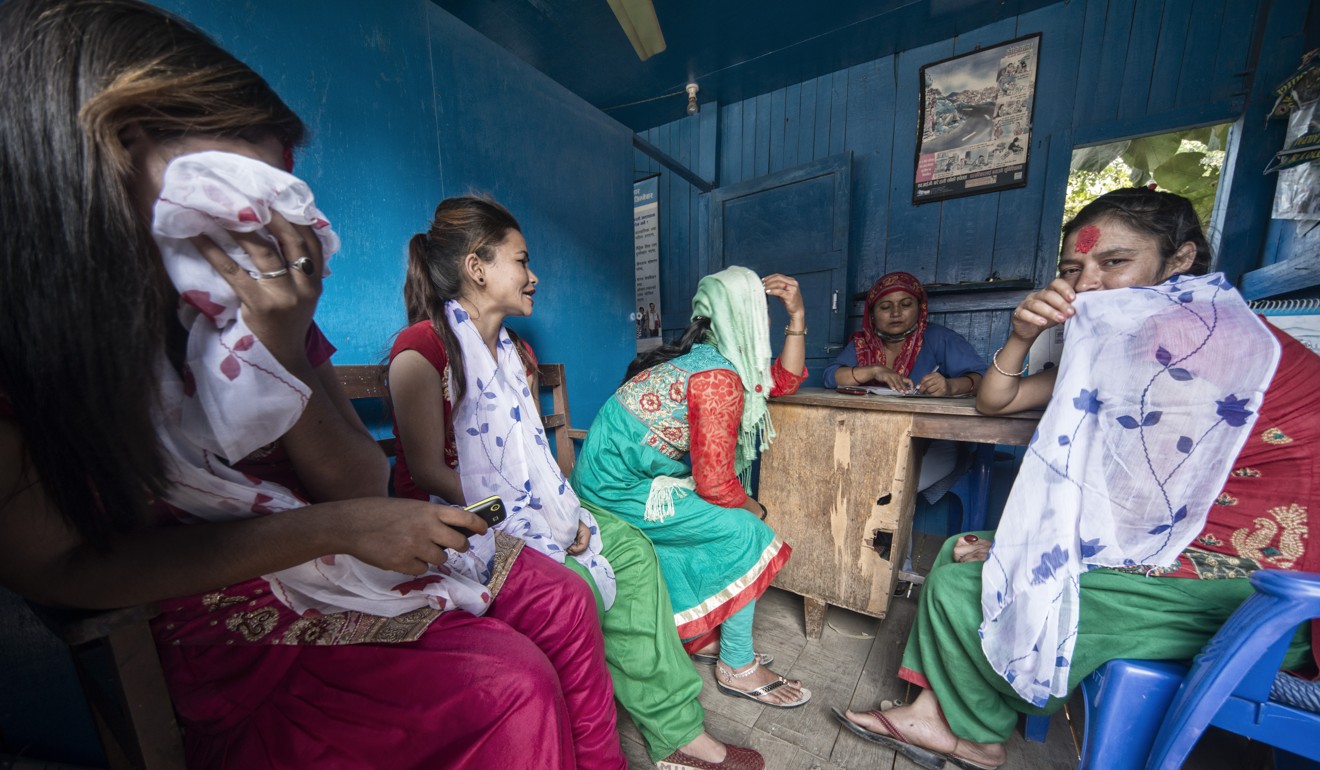
Although strict screening procedures have been designed for women going abroad to work as helpers – and it is illegal for Nepalis to travel for that purpose via India – last year Reuters reported that Nepalese immigration officials were suspected to be profiting from the trade.
“Half of the women we met told us that they had left from Kathmandu’s airport without being questioned by authorities, while the other half had travelled through India, Bangladesh and Sri Lanka,” lawmaker Prabhu Shah, who headed a parliamentary panel appointed to probe reports of abuse of Nepali migrants in the Middle East, told the news agency.
“It is not possible for so many women to pass through the airport without the knowledge of immigration officials,” Shah said. “The government must investigate this. Our women are living in a very pathetic condition there.”
Women fly on tourist visas and are sold for US$5,000 each, he said, working as helpers, subjected to inhumane conditions and seldom paid for their work.
According to an NHRC report titled “Trafficking in Persons”, published in June last year, “Smuggling to China for forced sex, to Afghanistan for security guard [work], to [the] USA via Latin America, to South Korea and China for marriage” is on the rise.
Koirala points to the Tibetan town of Khasa (the Nepali name for Zhangmu) on the Nepal-China border. “A few areas in border towns have opened up for entertainment, mainly for truck drivers linking both countries,” she says, “and Nepalis – who need a visa to enter China – can stay visa-free for the day. But this one-day-stay rule is seldom enforced, so women from Nepal are being held there against their will and used as sex slaves.”
Maiti rescued two teenagers, aged 14 and 16, from the area last year. “They were trafficked at the age of six. They have no idea where they lived [before], nor who their parents are, and they speak only Mandarin,” says Koirala. Now they live at the NGO’s headquarters in Kathmandu, with some 120 women and more than 300 children.
Koirala adds that technology has given traffickers an effective platform. “Traffickers have found a new tool for their crimes in social networks like Facebook,” she says. “Girls trust people whom they don’t know and follow their advice. They are easy prey.”
Koirala advocates for education in a country where only 44.5 per cent of women over the age of 15 are literate. “It’s the best shield against traffickers,” she argues, adding that education is what rescued girls receive at Maiti’s shelters. “Rescuing women is not enough. We have to provide the means for them to earn a living, otherwise they will still be vulnerable.”
Kamala and Mina learn hairdressing in a salon in Nepalgunj. Kamala was intercepted at the border checkpoint when she was travelling alone. She was 16 at the time.
“My mother had died and I knew my father was somewhere in India,” she says. “He had abandoned us and I had nowhere to stay, so I decided to look for him.”
After a few months in Maiti’s shelter in Nepalgunj, she accepts the dangers she faced. “I’ve heard many stories from the other girls. Now I’m grateful that someone stopped me.”

Mina (not her real name) was not so lucky. She wanted to work abroad and paid an agent to prepare the paperwork needed to travel to Dubai. But, when she landed there, airport staff told her she was only in transit to Kuwait, her final destination.
“The Saudi family I worked for confiscated my passport and mobile phone,” Mina says. “It was only when an Indonesian maid came with some friends of the family I worked for, three years on, that I got hold of a phone and called the Nepalese embassy.”
Mina was rescued and sent back to Nepal, and Maiti is now pursuing the agent on her behalf. “She is already in prison and we are expecting a 20-year sentence, because she profited a lot,” Mina says. “But it makes me sad to know that the family who exploited me will face no consequence. Most likely they will find another girl like me as a replacement.”
At the prevention home run by Maiti in the central Nepalese district of Nawalparasi and sponsored by Unicef, the main task is to help vulnerable women before it’s too late.
“We identify troubled girls at risk and empower them with training,” says director Maya Chhetri. “Not only do we seek to give them the means to earn a living, we also want to turn them into activists who fight trafficking back in their home towns and carry out campaigns against women’s discrimination or child marriage. We believe this is the only way to spread change where it’s most needed, because we can only do so much with the means available. We hope they will warn others against being overly trusting.”
Sumitra Ranawat at the Nawalparasi Prevention Home. Picture: Miguel Candela
Sumitra Ranawat, 19, fell victim to a man she met via social media.
“We are six siblings, so I thought he could be my way out of poverty,” she says. “But when I escaped from home to meet him, I was forced to work for free at a snooker hall.”
Ranawat managed to escape, but her family turned their backs on her. “They said I was dirty, so I was disowned,” she says. Salvation came when a villager told her story to one of Maiti’s scouts, and she was accepted onto the sewing and embroidery course at Nawalparasi. “I can’t go back to my hometown,” says Ranawat “but I hope I can earn a living as a tailor.”
“When we met her for the first time, Sumitra was doing labouring work for 200 rupees a day,” says Chhetri. “She was exploited and we felt she was vulnerable to abuse and trafficking. In fact, she mentioned her willingness to cross to India.”
Many girls at the Nawalparasi Prevention Home have been disowned by their families or have escaped abusive child marriages. Amrita BK is trying to get her marriage annulled.
“I’ve learned here of the many dangers girls in rural areas face, and the injustice behind many of our customs,” says the 17-year-old, who is being cared for at the prevention home since being abandoned by her husband. “I hope we can bring change to the society.”
But, Koirala does not see an end to human trafficking anytime soon.
“We’ve been successful in a way, because people have started to debate an issue that has remained a taboo for 250 years,” she says. “I believe it could be solved if everybody treated girls as their own daughters. But it’s frustrating to see how, after 25 years of hard work, evil changes its face, but it doesn’t disappear.”





